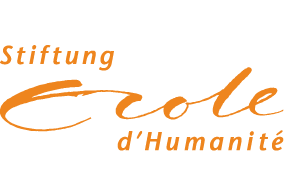The outdoors is more than a backdrop, it’s a place where students discover who they are, what they’re capable of, and how they contribute to something larger than themselves. Our Outdoor Education Programme is a cornerstone of the school experience, offering students the chance to explore, reflect, grow, and connect through meaningful time in nature.
From ski touring and kayaking to rock climbing, mountaineering, campcraft, navigation, and group leadership, our students don’t just learn about the natural world, they learn within it. They solve real problems in real time, face uncertainty with courage, and work in diverse groups to support one another through challenge and discovery.
In this process, they become more grounded, more confident, and more connected, both to the landscapes around them and to the people beside them.
Why It Matters
Outdoor Education at the Ecole is not about ticking boxes or collecting certificates. It’s about authentic learning. Students gain confidence by doing difficult things and succeeding. They learn leadership not in theory, but in the quiet, high-stakes moments of decision-making on a trail or rope. They experience what it means to belong, not because they fit a mould, but because they show up for others.
The stories that begin on mountaintops, by lakes and streams, and around campfires are often the ones students carry with them for life.
As we increasingly support students from diverse socio-economic backgrounds, including a growing number of scholarship recipients, we face a pressing challenge: many of our students arrive without the resources to purchase personal gear. This results in some students relying on outdated, ill-fitting, or excessively heavy equipment that can hinder their participation, comfort, and safety in the mountains.
Well-established outdoor education organisations, including the Duke of Edinburgh’s Award, NOLS, and Outward Bound, recommend that backpack loads should not exceed 25% of a participant’s bodyweight. For younger or smaller students, especially on six-day expeditions, that limit can only be realistically met using lightweight, modern gear. Without it, the risk of injury, fatigue, and disengagement rises significantly.
What we need
Our current stock of communal equipment, tents, stoves, packs, sleeping bags, is no longer sufficient or suitable for our evolving student population. An investment in new equipment is not just a logistical upgrade; it is an equity issue, a wellbeing safeguard, and a commitment to preserving the quality and inclusivity of one of our most defining educational offerings.
By equipping the program with lightweight, reliable gear, we ensure that every student, regardless of background, can fully participate in the transformative outdoor experiences that set the Ecole apart.
See Overview of Areas & Projects
From ski touring and kayaking to rock climbing, mountaineering, campcraft, navigation, and group leadership, our students don’t just learn about the natural world, they learn within it. They solve real problems in real time, face uncertainty with courage, and work in diverse groups to support one another through challenge and discovery.
In this process, they become more grounded, more confident, and more connected, both to the landscapes around them and to the people beside them.
Why It Matters
Outdoor Education at the Ecole is not about ticking boxes or collecting certificates. It’s about authentic learning. Students gain confidence by doing difficult things and succeeding. They learn leadership not in theory, but in the quiet, high-stakes moments of decision-making on a trail or rope. They experience what it means to belong, not because they fit a mould, but because they show up for others.
The stories that begin on mountaintops, by lakes and streams, and around campfires are often the ones students carry with them for life.
As we increasingly support students from diverse socio-economic backgrounds, including a growing number of scholarship recipients, we face a pressing challenge: many of our students arrive without the resources to purchase personal gear. This results in some students relying on outdated, ill-fitting, or excessively heavy equipment that can hinder their participation, comfort, and safety in the mountains.
Well-established outdoor education organisations, including the Duke of Edinburgh’s Award, NOLS, and Outward Bound, recommend that backpack loads should not exceed 25% of a participant’s bodyweight. For younger or smaller students, especially on six-day expeditions, that limit can only be realistically met using lightweight, modern gear. Without it, the risk of injury, fatigue, and disengagement rises significantly.
What we need
Our current stock of communal equipment, tents, stoves, packs, sleeping bags, is no longer sufficient or suitable for our evolving student population. An investment in new equipment is not just a logistical upgrade; it is an equity issue, a wellbeing safeguard, and a commitment to preserving the quality and inclusivity of one of our most defining educational offerings.
By equipping the program with lightweight, reliable gear, we ensure that every student, regardless of background, can fully participate in the transformative outdoor experiences that set the Ecole apart.
See Overview of Areas & Projects
